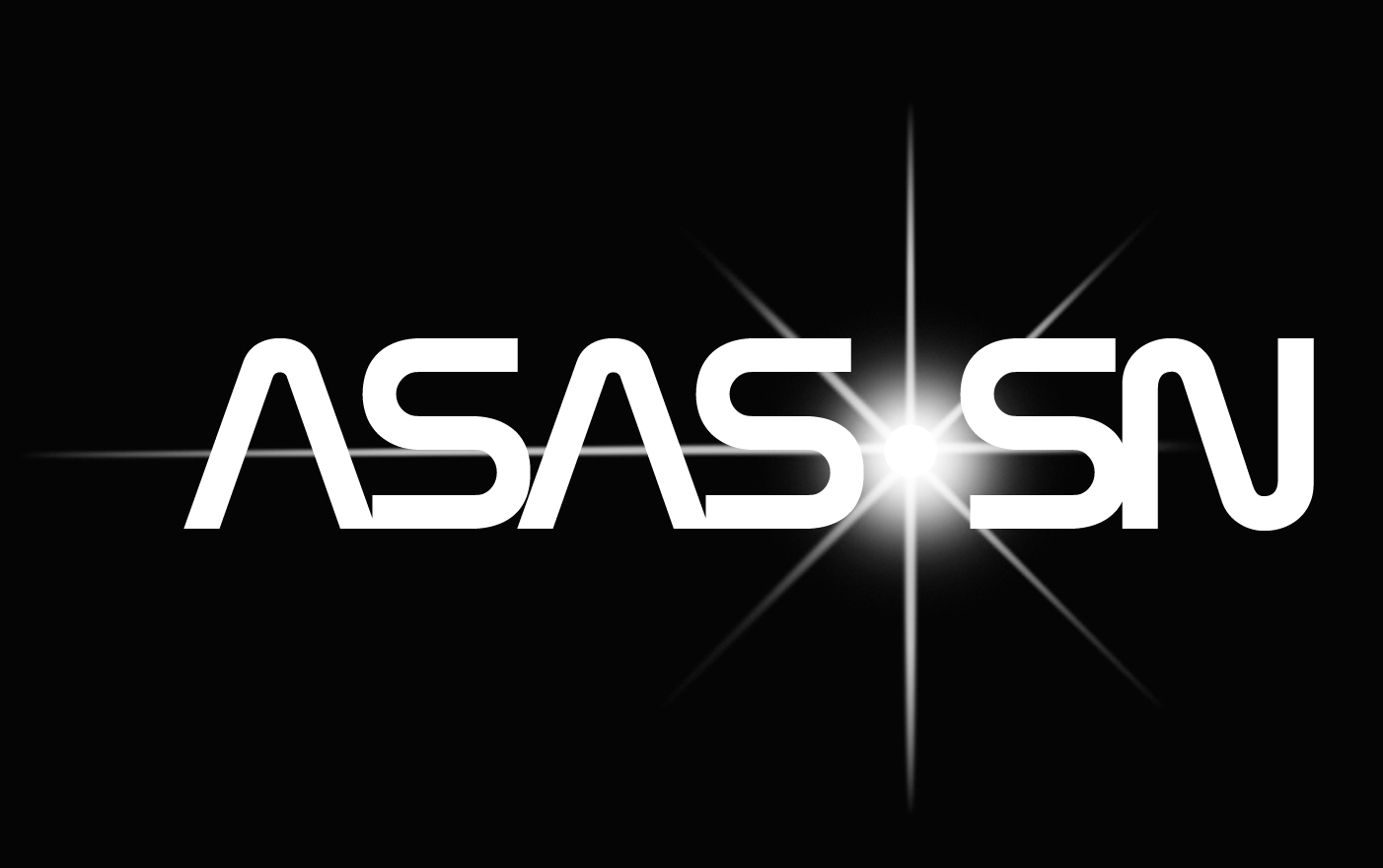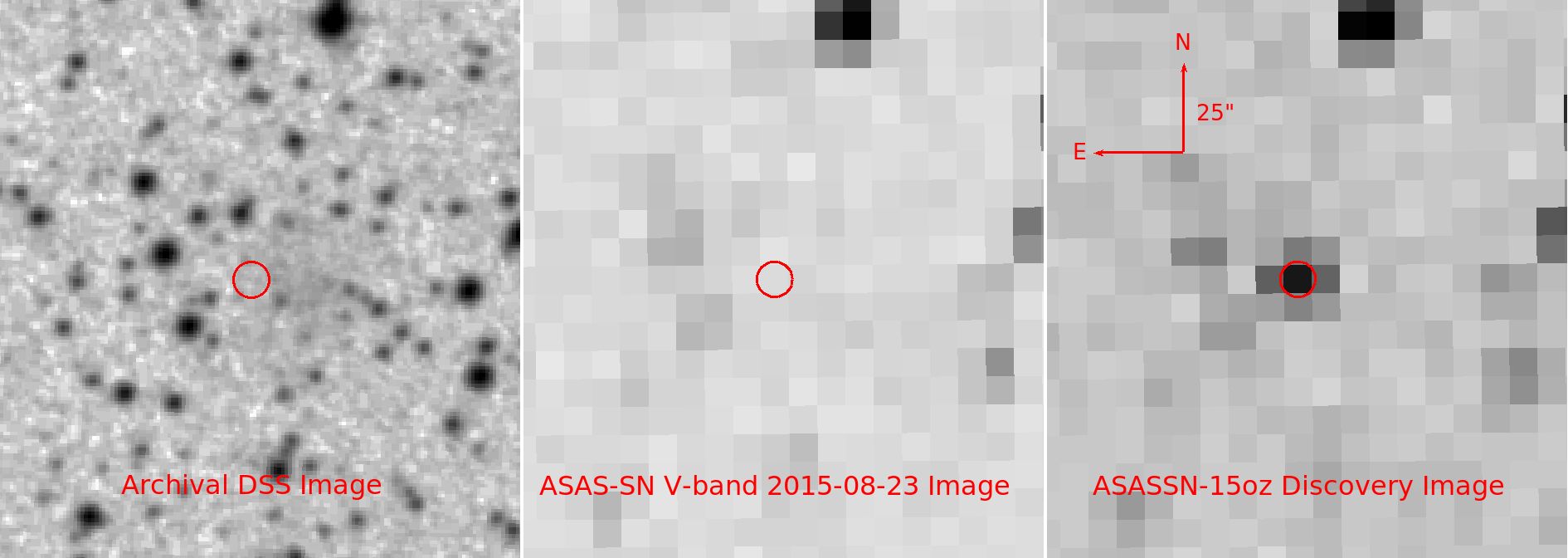
Assassin Picture of the Week
 | APOW Assassin Picture of the Week |

|
|
In December 2014 ASAS-SN was awarded generous grants from the Mt. Cuba Astronomical Foundation (hardware costs) and George Skestos (installation costs) to expand our Chile "Cassius" unit from two to four telescopes. We immediately ordered new Nikon lenses and ProLine PL230 cameras from FLI, and in early July 2015, thanks to hard work by LCOGT team, our two new cameras were deployed and started taking data. For many telescopes there is a long delay (sometimes years) between the "first light", when the telescopes takes it first image, and actually taking useful data suitable for doing science. However, that delay is not long at all for ASAS-SN: once we collect several good images of a field with the new camera to construct a good reference image for image subtraction, our automated pipeline can start to flag supernova candidates and other transients in real time. Indeed, our first supernova discovered with one of the new "Cassius" telescopes was discovered on August 31st, 2105, and released as SN candidate ASASSN-15oz on September 3rd, 2015. ASASSN-15oz, immediately confirmed as a young Type II supernova, is not only very bright, in fact one of the brightest supernova currently seen on the sky, but it is also located in a faint host galaxy HIPASS J1919-33, only about 30 megaparsecs from us. With eight cameras fully operational ASAS-SN will be now able to cover about 20,000 square degrees each clear night, getting us that much closer to our ultimate goal of observing the entire available optical sky at least once every 24 hours. |
Back to ASAS-SN page.
See previous APOWs:
Tom's poster at the 2015 DOE CSGF Annual Program Review
Tom and Ben: "Coffee Briefs" for Two Recent ASAS-SN Papers
ASAS-SN ``Unpaid Professional Collaborators'': Joe Brimacombe
Where Do Type Ia Supernova Dwell?
Bright Supernova Discoveries Statistics (Again)
ASASSN-14lp: the Brightest Supernova Currently on the Sky
ASASSN-14li: Possible Tidal Disruption Event in Progress
ASASSN-13co: Type-Defying Luminous Type II Supernova
Bright Supernova Discoveries Statistics
Bright Supernovae: ASAS-SN Contribution
First Light on the Small Magellanic Cloud from Chile
Congratulations to Tom and Jacob!
ASASSN-13dn: Spectra from a New Instrument
ASASSN-14ae, A Very Luminous Transient
Our Latest Paper, in Video Form
Host Galaxies of ASAS-SN Supernovae
Back in Real-Time Discovery Business!
Active (Some Less, Some More) Galactic Nuclei with ASAS-SN
Swift
Ultraviolet and Optical Follow-Up of ASASSN-13dl, Our Latest
Supernova
Dramatic AGN Outburst in NGC 2617
Two ASAS-SN Views of Orion Nebula
AAVSO Observations of Cataclysmic Variable ASASSN-13ck
Two ASAS-SN Supernovae in One Day!
Extreme M-dwarf Flare Observed by ASAS-SN;
Multiband photometric follow-up of ASASSN-13aw (SN 2013dr);
How ASAS-SN Discovers Supernovae: Case of Supernova ASASSN-13bb;
NGC 2617: Dramatic Seyfert Type Change;
ASASSN-13/SN 2013da: Our First Supernova Three Weeks Later;
This homepage is maintained by Tom Holoien and Kris Stanek.
Updated Mon Jul 27 13:53:43 EDT 2015